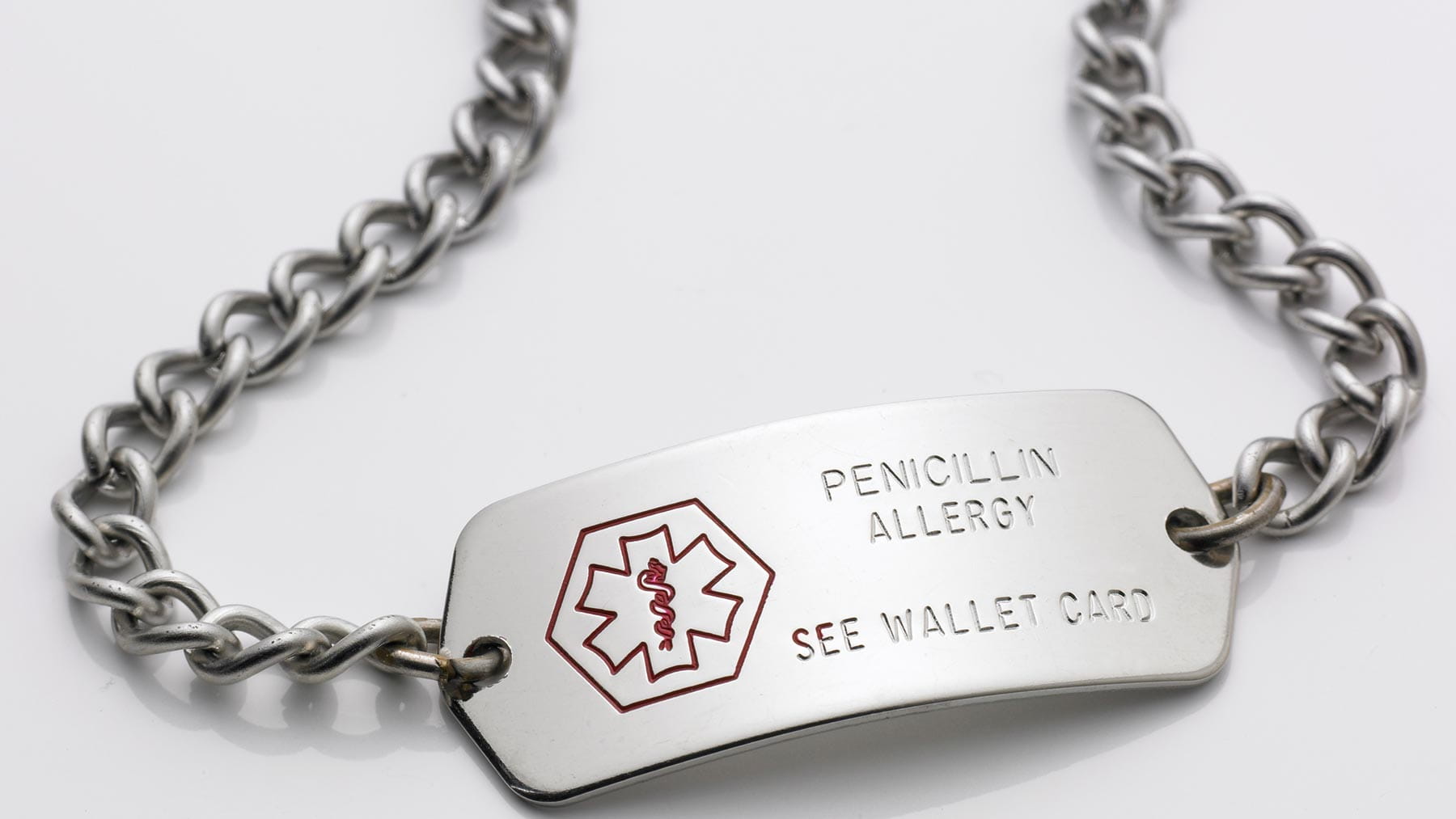Do you really have a penicillin allergy?

This is cause for concern because a label of penicillin allergic puts patients at an increased risk of developing more severe infections or having to stay in the hospital longer.
If you suspect you have a penicillin allergy, what should you do? Here are six common questions about penicillin allergy:
What are penicillin allergy symptoms?
Penicillin allergy symptoms appear when you take penicillin or related medications like amoxicillin and ampicillin. Typically, people with an allergy to penicillin will develop a red, splotchy raised rash. Some people will also develop hives, which are raised bumps that are very itchy. In very severe reactions, people will experience skin peeling and blistering, but that’s very rare. There is also the potential for people to have an anaphylactic reaction, with shortness of breath, wheezing, throat closing, vomiting, racing heart and passing out.
The mild reactions will resolve on their own but, if someone experiences skin peeling and blistering, they should contact their doctor. If someone is having an anaphylactic reaction, they would need to seek care at the emergency department. It’s very important for people to let their doctor know if they have an adverse reaction to penicillin or any medication.
Why do so many people think they’re allergic to penicillin when they aren’t?
What we often hear from patients is that their mother told them they were penicillin allergic because they received penicillin as an infant or toddler and developed a splotchy red rash.
That rash was actually probably due to one of two things – the immune system gets revved up when it’s fighting off an infection and sometimes one of the consequences is a rash, or the interaction between how the body is fighting off an infection and the antibiotic prescribed to treat it causes a rash.
If a patient truly has a penicillin allergy, more than 80 percent lose the allergic response after 10 years.
How can you determine if you’re really penicillin allergic?
It’s very helpful if people jot down what happened and the timing of their symptoms so that they care share that information with their doctor or allergist. If they don’t personally remember what happened, they should try to get the story from someone who was there, whether it’s a parent or another caregiver. Capture any and all details, such as when it started, did they have to go to the hospital and whether they have had penicillin since that time and done OK.
The next step is talking with a doctor about what happened. In certain circumstances, they may be able to tell them that if they tolerated the medication, they may not be allergic. In other cases, they may make a referral to a board-certified allergist and immunologist for an evaluation. The allergist may recommend doing skin testing or a dose challenge, which is giving a small dose of penicillin in a supervised setting.
What risks are associated with the penicillin allergic label?
Patients who have that label of penicillin allergy on their chart have a fourfold risk of developing a severe diarrheal infection called Clostridium difficile, or C. diff. We also know that patients who have that label on their charts have higher healthcare costs because they end up staying in the hospital longer. That’s thought to be due to the fact that they aren’t being treated with more efficient antibiotics.
Why is penicillin the preferred antibiotic?
Penicillin and related antibiotics such as amoxicillin and ampicillin are the gold standard for treating most bacterial infections because they are very good at killing bacteria. The alternative broad spectrum antibiotics like vancomycin, aztreonam and ciprofloxacin aren’t as efficient at killing bacteria and they also wipe out some beneficial bacteria, which can set patients up for a host of potential problems.
Should you contact your doctor to determine if you’re really penicillin allergic?
It's definitely easier to clear people of a penicillin allergy label before they develop a medical condition that requires hospitalization. If someone is in the hospital, it’s more challenging because their medications may interact with the skin testing. We can do something called desensitization to trick the immune system into tolerating the penicillin for that course of therapy. This involves taking penicillin in increasing amounts until they can tolerate the recommended dose with minimal side effects, but it requires a day in the intensive care unit. Desensitization would have to be repeated if they need penicillin to treat future infections.
Kara Wada is an assistant professor of allergy and immunology at The Ohio State University Wexner Medical Center.




